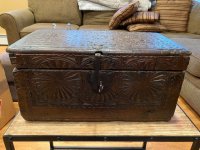CloudKicker0
Full Member
- Jul 16, 2022
- 118
- 163
This is my first and only point I’ve ever found, and I guess you could say that it found me because at the time I wasn’t looking for it while I was walking down the beach (Eastern NC surface find). Now mostly wherever I go I’m scanning the ground for artifacts and anomalies.
I posted some pictures back in May 2020, but have since received some new information from a state archeologist whose name I’ll respectfully hold in anonymity.
“The projectile point looks similar to what we would call a Hardaway side-notched, though the side notching is not as pronounced as many examples and it has likely been heavily resharpened. The base looks like its been ground, which is a common feature on late Paleo-Indian and Early Archaic points in this area. This type of point likely dates to 10-11,000 years ago. The material is interesting and while it is likely still a variety of metavolcanic stone, which the majority of stone tools are made out of in NC, it is not a type I am very familiar with.”
I’ve “scoured” the internet for a point of like-material but have been unsuccessful. Does that make it an unclassified piece? Would someone please share pictures of a point with similar material?
I’m also sharing some pictures of a natural rock of somewhat similar material. If anyone can see any signs of flaking/grinding or shaping would you please help share with this novice?
I posted some pictures back in May 2020, but have since received some new information from a state archeologist whose name I’ll respectfully hold in anonymity.
“The projectile point looks similar to what we would call a Hardaway side-notched, though the side notching is not as pronounced as many examples and it has likely been heavily resharpened. The base looks like its been ground, which is a common feature on late Paleo-Indian and Early Archaic points in this area. This type of point likely dates to 10-11,000 years ago. The material is interesting and while it is likely still a variety of metavolcanic stone, which the majority of stone tools are made out of in NC, it is not a type I am very familiar with.”
I’ve “scoured” the internet for a point of like-material but have been unsuccessful. Does that make it an unclassified piece? Would someone please share pictures of a point with similar material?
I’m also sharing some pictures of a natural rock of somewhat similar material. If anyone can see any signs of flaking/grinding or shaping would you please help share with this novice?
Amazon Forum Fav 👍
Attachments
-
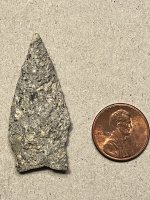 F93C3FA4-2EF6-4365-B362-B5E0BDAD3924.jpeg1.8 MB · Views: 99
F93C3FA4-2EF6-4365-B362-B5E0BDAD3924.jpeg1.8 MB · Views: 99 -
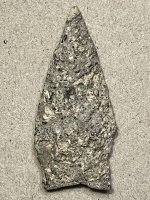 8B97A69D-F129-4304-950E-720826804044.jpeg1.6 MB · Views: 89
8B97A69D-F129-4304-950E-720826804044.jpeg1.6 MB · Views: 89 -
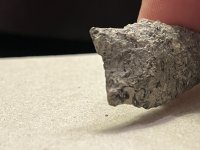 5A4FFD3C-2EBA-4C5D-AB53-FF7B65884044.jpeg1 MB · Views: 74
5A4FFD3C-2EBA-4C5D-AB53-FF7B65884044.jpeg1 MB · Views: 74 -
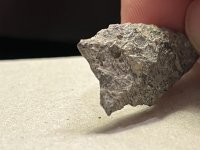 891F2EB1-FC31-483F-BEBF-2D75112FEACD.jpeg1 MB · Views: 63
891F2EB1-FC31-483F-BEBF-2D75112FEACD.jpeg1 MB · Views: 63 -
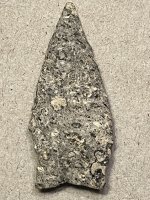 61FA87A1-D258-4BBC-82E5-159C649DC647.jpeg1.5 MB · Views: 58
61FA87A1-D258-4BBC-82E5-159C649DC647.jpeg1.5 MB · Views: 58 -
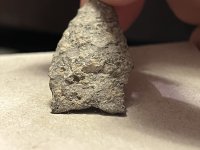 9CB1A6A7-D4DB-45C2-B970-EC960FCC211F.jpeg1.1 MB · Views: 57
9CB1A6A7-D4DB-45C2-B970-EC960FCC211F.jpeg1.1 MB · Views: 57 -
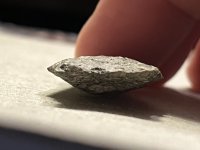 7426FFF3-4462-41BC-BA31-B9F18E14B4A8.jpeg702.7 KB · Views: 52
7426FFF3-4462-41BC-BA31-B9F18E14B4A8.jpeg702.7 KB · Views: 52 -
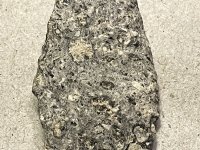 E67CC4E0-D887-4BA9-8E8D-6348ED816633.jpeg1.5 MB · Views: 55
E67CC4E0-D887-4BA9-8E8D-6348ED816633.jpeg1.5 MB · Views: 55 -
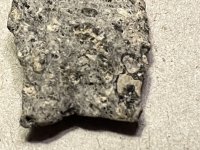 BB7934E2-C891-40A1-BDBC-3A26720C2641.jpeg1.1 MB · Views: 75
BB7934E2-C891-40A1-BDBC-3A26720C2641.jpeg1.1 MB · Views: 75 -
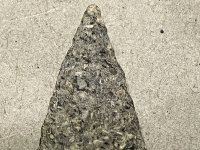 594DB68B-98CA-4BBD-B89E-74CCAB65A4EA.jpeg1.4 MB · Views: 60
594DB68B-98CA-4BBD-B89E-74CCAB65A4EA.jpeg1.4 MB · Views: 60 -
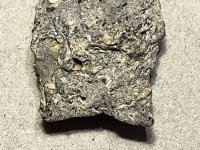 1E67448E-ABD8-4361-BD8C-F63DFAF2C8B2.jpeg1.5 MB · Views: 55
1E67448E-ABD8-4361-BD8C-F63DFAF2C8B2.jpeg1.5 MB · Views: 55 -
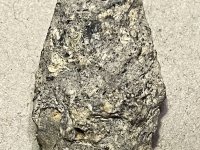 670C2B27-369C-4131-9DCC-C627217E5111.jpeg1.6 MB · Views: 78
670C2B27-369C-4131-9DCC-C627217E5111.jpeg1.6 MB · Views: 78 -
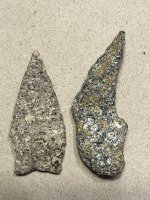 DA43065C-3888-4056-93D6-95E4ABF92126.jpeg2.2 MB · Views: 66
DA43065C-3888-4056-93D6-95E4ABF92126.jpeg2.2 MB · Views: 66 -
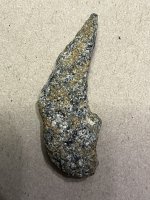 4B547B5A-370E-4298-A637-BE59F41DC753.jpeg1.8 MB · Views: 63
4B547B5A-370E-4298-A637-BE59F41DC753.jpeg1.8 MB · Views: 63 -
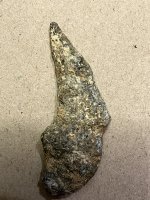 08173019-1C96-4324-BA4F-A195D4E99C6E.jpeg1.7 MB · Views: 56
08173019-1C96-4324-BA4F-A195D4E99C6E.jpeg1.7 MB · Views: 56 -
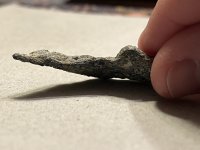 6BBB25F4-4F53-4E52-B839-511BBBD3C182.jpeg938.6 KB · Views: 58
6BBB25F4-4F53-4E52-B839-511BBBD3C182.jpeg938.6 KB · Views: 58 -
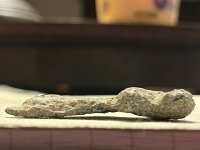 3A26EE61-03B9-4956-A513-AA3FB7151609.jpeg871.7 KB · Views: 54
3A26EE61-03B9-4956-A513-AA3FB7151609.jpeg871.7 KB · Views: 54 -
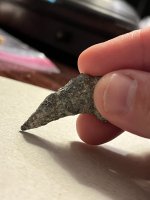 946CD16D-5FA6-4C72-96CC-905D7AAD24EC.jpeg865.8 KB · Views: 58
946CD16D-5FA6-4C72-96CC-905D7AAD24EC.jpeg865.8 KB · Views: 58 -
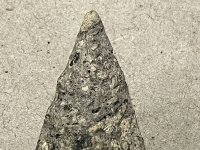 C624B10E-DE91-48F5-A634-9B346E8D48B2.jpeg1.4 MB · Views: 84
C624B10E-DE91-48F5-A634-9B346E8D48B2.jpeg1.4 MB · Views: 84
Upvote
10




